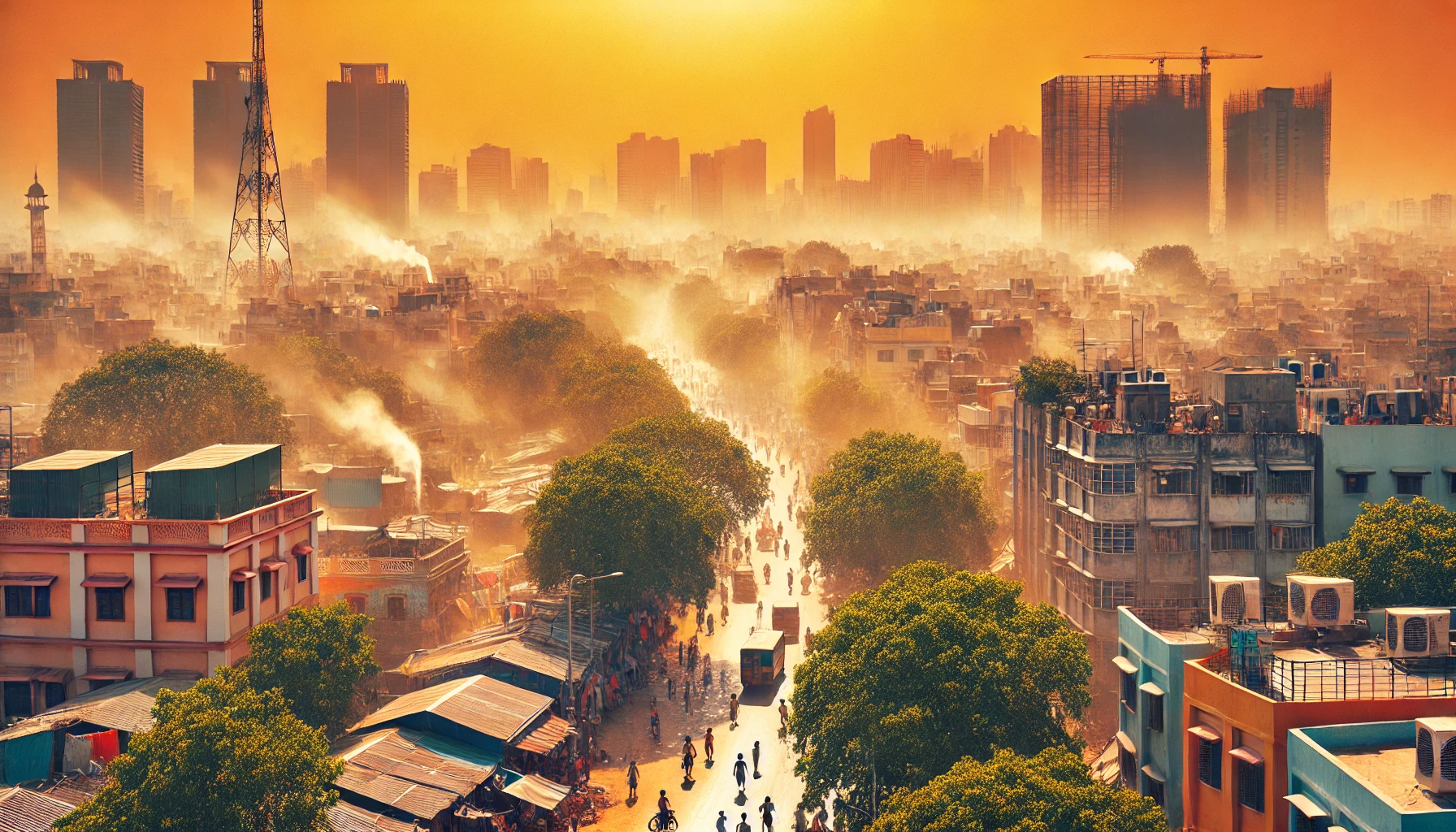UN Agencies Warn Extreme Heat Now a Global Public Health Emergency
Modelled estimates indicate that between 2000 and 2019, approximately 489,000 heat-related deaths occurred each year — with 45% in Asia and 36% in Europe.

The World Meteorological Organization (WMO) has issued an urgent warning that extreme heat is now a daily reality for millions worldwide, with dangerous daytime and overnight temperatures pushing health systems to the limit, fuelling deadly wildfires, and worsening air quality. Backed by nine other UN agencies, the WMO is rallying behind the UN Secretary-General’s Call to Action on Extreme Heat, pledging stronger early warning systems, targeted public health measures, and climate resilience initiatives to save lives.
A Silent Killer That Can Be Stopped
Extreme heat has long been called a “silent killer,” but WMO Deputy Secretary-General Ko Barrett stressed that “with today’s science, data and technologies, silence is no longer an excuse. Every single death from extreme heat is preventable.”
Modelled estimates indicate that between 2000 and 2019, approximately 489,000 heat-related deaths occurred each year — with 45% in Asia and 36% in Europe. Experts note these figures are likely underestimates due to gaps in diagnosis and reporting. Urban areas suffer a “heat island effect” that magnifies health risks, especially for elderly populations and those with chronic illnesses.
Record-Breaking Temperatures Across Continents
Europe
July 2025 ranked as the third-warmest July on record globally, according to the EU’s Copernicus Climate Change Service. Arctic sea ice extent tied for the second-lowest July in the 47-year satellite record. Heatwaves hit Sweden and Finland with prolonged spells above 30°C, while Türkiye set a new national record of 50.5°C. Southeast Europe faced both extreme heat and intense wildfire outbreaks.
Asia and the Middle East
The Himalayas, China, and Japan recorded significantly above-average temperatures. On 5 August, Japan broke its national record with 41.8°C, surpassing the previous 41.2°C set just days earlier. Dozens of station records — including high minimum overnight temperatures — fell across Japan, prompting special heat stroke alerts from its Meteorological Agency.
Parts of West Asia endured 42–50°C conditions, with Iran and Iraq seeing localized readings above 50°C that disrupted electricity, water, education, and labour. Saudi Arabia, Syria, and Pakistan also reported severe heat stress conditions.
North America
In the southwestern United States, temperatures exceeded 45°C, while northern Mexico faced similar extremes. Arizona’s Grand Canyon National Park was hit by a major wildfire during the heatwave, disrupting tourism and threatening ecosystems.
North Africa
Morocco’s national meteorological service issued warnings for 40–47°C heat for the week of 4 August. WMO experts warned that such near-surface extreme heat, when coupled with cold air aloft, can trigger flash floods and landslides over mountainous terrain.
Wildfires and Worsening Air Quality
The extreme heat has intensified wildfire seasons across multiple continents:
-
Canada is facing one of its worst fire seasons on record, with 6.6 million hectares burned by 3 August — triple the 25-year average, though less than the record-breaking 12.3 million hectares burned by this date in 2023. Smoke plumes from Canadian fires crossed the Atlantic Ocean twice this summer, degrading air quality in Western and Central Europe.
-
Greece, Türkiye, and Cyprus have battled deadly wildfires that forced evacuations, destroyed property, and filled skies with thick smoke.
-
In the U.S. Southwest, wildfires have compounded heat risks, with local health authorities warning of toxic smoke inhalation risks.
Four Pillars of the UN Call to Action on Extreme Heat
The UN’s coordinated response focuses on:
-
Caring for the vulnerable — prioritizing elderly people, children, outdoor workers, and those with pre-existing health conditions.
-
Protecting workers — enforcing safe working hours, rest breaks, and hydration access.
-
Boosting resilience — using science and climate data to strengthen infrastructure, public health systems, and urban design.
-
Limiting warming — pursuing climate policies to cap global temperature rise at 1.5°C above pre-industrial levels.
Early Warnings for All Initiative
The WMO is expanding heat early warning systems to ensure at-risk populations receive timely alerts with actionable safety guidance. A joint WHO–WMO analysis shows that scaling up heat-health warning systems to 57 countries could prevent 98,314 deaths per year.
Joy Shumake-Guillemot, co-lead of the Global Heat-Health Information Network (GHHIN), said:
“Extreme heat is no longer a distant or seasonal concern—it’s a daily reality. This is not just a climate issue, it’s a public health emergency.”
New Tools for Heat Risk Governance
On the first anniversary of the Call to Action (25 June), GHHIN, WMO, and the UN Office for Disaster Risk Reduction launched new resources, backed by $11.5 million in funding from the Rockefeller Foundation and Wellcome:
-
Stocktake Report — maps current UN and international organization activities on extreme heat management, identifying gaps and coordination needs.
-
Global Assessment of Heat Action Plans — reviews policies from six countries (Australia, Canada, France, India, UK, USA) to outline best practices and persistent challenges.
-
Case Study Narrative Analysis — showcases 12 countries’ diverse governance models for heat resilience, from Bangladesh to Senegal and Ecuador, providing real-world adaptation strategies.
The Road Ahead
The WMO warns that extreme heat events will intensify in frequency, duration, and severity due to climate change, with cascading impacts on health, ecosystems, and economies. The organization is urging all governments to integrate heat-health action plans into their climate adaptation strategies and to view heat resilience as a critical public health investment.










